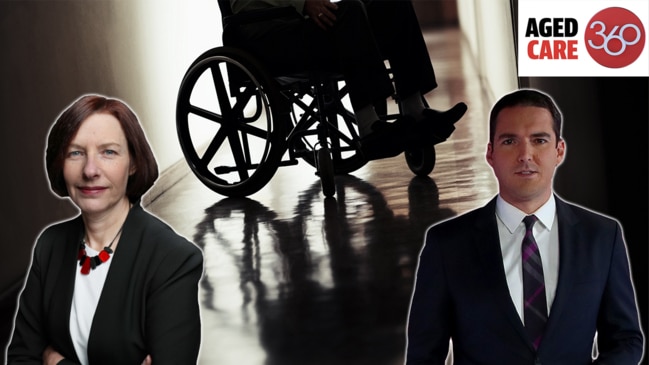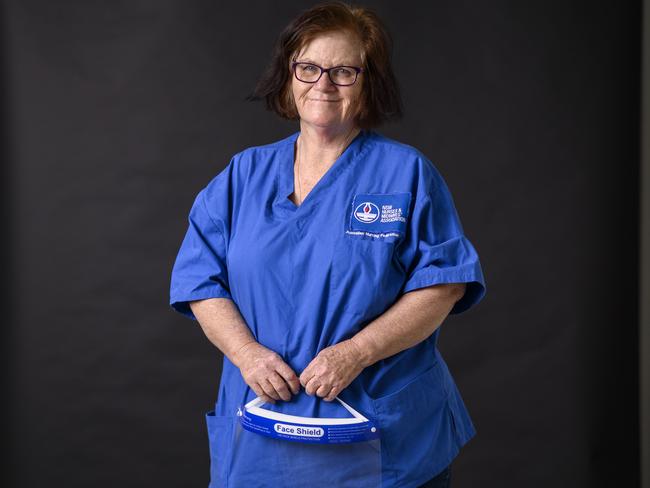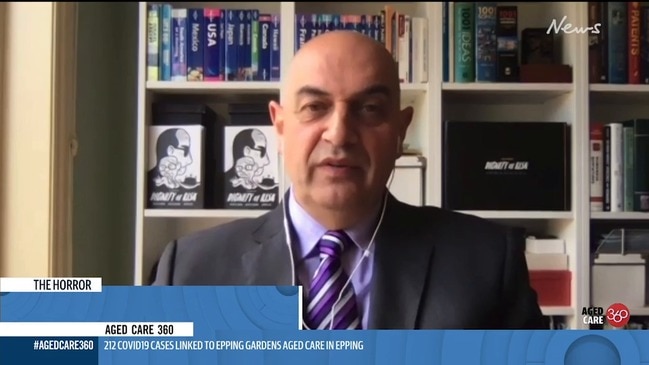New Medicare levy: Is this how we fix aged care?
With Australia’s aged care sector in a state of disarray, new radical ideas to fix the mess and help vulnerable Australians have been revealed. WATCH OUR AGED CARE 360 SHOW

National
Don't miss out on the headlines from National. Followed categories will be added to My News.
- Aged Care 360: Lifting the lid on Australia's aged care sector
- Horror aged care homes: Shocking acts of abuse
Increasing the Medicare levy and uncapping the number of elderly Australians able to receive care in their owns homes are just two of the solutions offered by our Aged Care 360 panel.
An urgent review of nurse to resident ratios also needs to be addressed to ensure vulnerable residents are given adequate level of care and the low rates of pay of staff needs to be fixed.
News Corp Australia this week launched Aged Care 360 – bringing together a panel of experts and those affected first-hand by the crisis involving our aged care sector.
Panel members included Monash University’s Head of Health Law and Ageing Research Unit Professor Joseph Ibrahim, Federal Secretary of the Australian Nursing and Midwifery Federation Annie Butler, Jason Ward from the Centre for International Corporate Tax and Accountability Research and Anthony Bowe, whose mother Patricia Shea almost died after contracting COVID-19 as a resident of Newmarch House in Sydney.
Minister for Aged Services Richard Colbeck was the only guest to decline the invitation to appear on the show.
WATCH OUR SPECIAL AGED CARE 360 SHOW ABOVE.

Panel member and Opposition spokeswoman on aged care Julie Collins said minimum staffing ratio levels had to be introduced in aged care and staff should be required to have qualifications before being hired.
“The fact that we’ve got some facilities in Australia, where you’ve got only one nurse on all night for 150 residents is not the community expectation,” Ms Collins said.
Personal care workers make up 80 per cent of the aged care workforce but they aren’t registered with any professional body and get six weeks training – if any at all.
In some financially successful aged care homes residents are receiving just 2.95 hours of care per day, while most homes provide just 3.2 hours of care. International best practice is 4.3 hours of care.
Annie Butler said poor pay rates made it hard to attract workers to aged care, where most get paid up to 19 per cent less than if they worked in a public hospital.
She told the Aged Care 360 panel workers in Bunnings got paid more per hour than personal care workers.
“Most of our members stay in the sector for the love of the job, for the love of the residents, many tell use they could earn more in Woolworths,” she said.
An aged care nurse who wished to remain anonymous told News Corp in the aged care home where she worked there was just one assistant in nursing in charge of 40 high needs residents at night.
The only other worker was a registered nurse who was in charge of 100 high needs residents.
She recounted how one night three elderly patients were in desperate needs of attention but she couldn’t attend to two of them as “I was over the other side with a lady that couldn’t breathe and wanted oxygen”.

The Health Services Union that represents the bulk of aged care workers wants the Medicare levy raised from 2 to 2.65 per cent to provide a $20 billion funding injection into the sector.
“We must now build the aged care system our elderly deserve. Care homes desperately need more staff with greater training and higher pay. For too long the system has relied on the goodwill of a highly casualised and underpaid female workforce that often retired into poverty,” Gerard Hayes, National President of the Health Services Union said.

Aged Care 360 panel member Sean Rooney from Leading Aged Services Australia said the federal government needed to remove the caps on funding for provided aged care to elderly residents in their own homes.
“We’re selling people on the promise that oh yes, you can age in your home, but in actual fact, the services to deliver that are not available,” he said.
There are about 100,000 people waiting to receive aged care services like cleaning, showering, feeding in their own home.
Currently 30,000 people a year die waiting for these home care services, while others end up in nursing homes because of government funding caps.

Aged & Community Services Australia (ACSA) CEO Pater Sparrow said residential aged care homes received between $265 to $300 a day per resident while many needed the type of subacute care that hospitals were paid $1300 dollars a day to provide.
Liberal senator and former aged care Minister Concetta Fierravanti-Wells said aged care services should be funded like Medicare and also called for funding caps to be removed.
She said elderly people would have their care needs assessed and would be able to go to their local aged care hub and order the services they were assessed as needing.
MORE NEWS:
Maserati and a mansion: Aussie aged care owner quits
‘Utter disgrace’: Aussies slam aged care as $44bn sector cries poor
‘Low act’: Dying Aussie booted out of home in food row
The items in your home spying on you right now
Aged Care 360 panel member Professor Joseph Ibrahim said the outcomes of care and safety inspections of residential aged care homes must be publicly available, while fellow panel member Jason Ward said aged care providers receiving more than $10 million in annual federal funding must submit financial statements with the Australian Securities and Investments Commission (ASIC).
Pain Australia CEO and Aged Care 360 panel member Carol Bennett said the aged care regulator needed more power, had to become more independent form the industry and tougher action should be taken on underperforming homes.
Originally published as New Medicare levy: Is this how we fix aged care?

